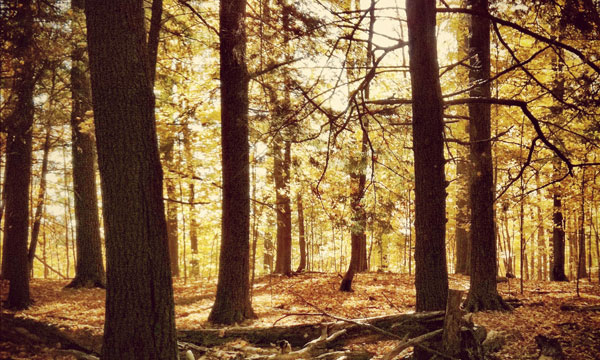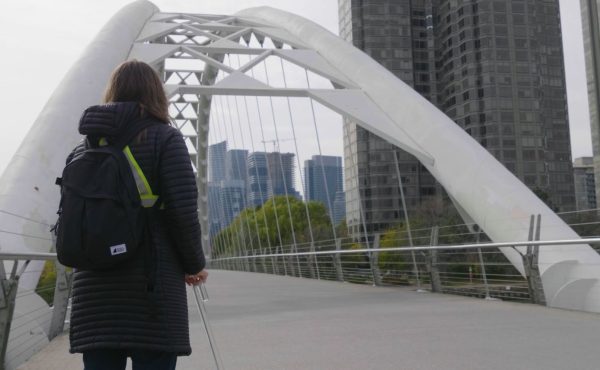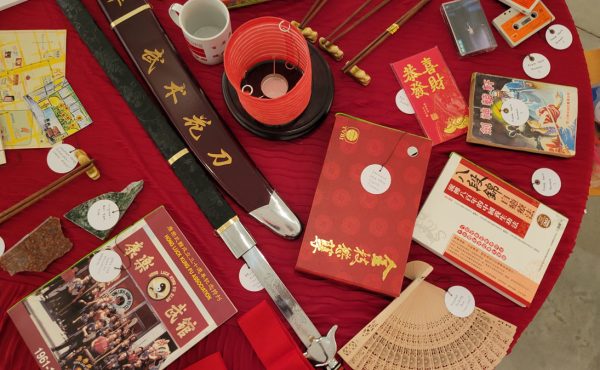Nobody could beat him. Ever since the beginning of the French Revolution, France had been fighting wars with pretty much every single other big country in Europe. And while Robespierre and his gang of paranoid mass murderers were busy guillotining everybody in Paris, Napoleon was leading the French army to one victory after another. Before long, he had taken over the country, crowned himself Emperor, and built a network of conquests and alliances that stretched from one end of Europe to the other. The only country left to fight was England. So an invasion of England was next on Napoleon’s list.
There was just one big, floating, wooden problem: the Royal Navy. The British fleet had ruled the waves for the last 100 years. And they could beat Napoleon. People still talk about how badly Lord Nelson’s fleet beat the French at the Battle of Trafalgar. It left Napoleon’s navy in tatters.
But the Emperor did have another way of screwing with the Royal Navy: he could take away their wood.
People in England had been chopping down their forests since the Stone Age. They barely had any left. And it took thousands of oak trees just to build one ship. The masts were especially hard to find — they had to come from big, strong, old-growth pines. The British were having to ship them in from the far north-east corner of the continent, from the towering forests on the shores of the Baltic Sea.
The same Baltic shores that Napoleon now controlled.
In fact, Napoleon now controlled just about all of the shores in Europe — which meant he could seriously mess with the British economy. He declared an embargo. No one was allowed to trade with England. Not France, not Napoleon’s allies, not the nations he had conquered, not even neutral countries. If he found anyone trading with the British, he would arrest the Britons and burn all the goods. He even threatened to invade Russia if they didn’t agree. And just like that, Napoleon had robbed the Royal Navy of their Baltic masts.
That’s where Toronto comes in. While all of this was happening in the early 1800s, our city was still a brand new little frontier town. It was surrounded by ancient forests that had been growing here for thousands of years. They’d occasionally been cut down too — the First Nations cleared land for villages and cornfields — but they’d never suffered anything like the permanent, wholesale deforestation English forests had. There were still woods all over eastern Canada. And they were full of masts.
Napoleon could keep the Baltics from trading with England, but his navy couldn’t keep England from shipping wood across the ocean from Canada. All over the Canadian colonies, lumberjacks started cutting down trees. Timber exports went up by something like 1000% in just three years. Tens of thousands of masts headed across the Atlantic.
Some of them came from the forests of Toronto. The woods of the Rouge Valley — now the verrry eastern edge of Scarborough — were very tall and very old. They were home to wolves and bears and cougars and elk, wild beasts roaming beneath enormous white pines — the perfect tree for making masts. Some of them rose twelve storeys above the forest floor.
By then, the mouth of the Rouge River had already seen plenty of history. The very first people to walk along the valley’s forest trails had been prehistoric nomadic hunters. They arrived thousands and thousands of years ago, leaving behind traces of their campsites and the rock they chipped into tools. More recently, it had been the First Nations. By the middle of the 1600s, the Seneca had built a village — Ganatsekwyagon — on a high hill overlooking the valley. It was a hub for the fur trade. Famous French explorers Jolliet and Marquette stopped by on their way deeper into the continent. Coureurs de bois came to trade, or to travel up the Rouge in canoes toward the Upper Great Lakes. One missionary spent a famously harsh winter there, starving and desperate, living off squirrels and chipmunks and eating moss off the base of the trees. Even the Governor of New France once paid a visit to Ganatsekwyagon during his war with the Seneca. His allies, the Mississauga, took it over.
But by the early 1800s, the Rouge Valley was part of the British Empire. And with the Empire at war with Napoleon, it was ax-wielding lumberjacks making trails through those woods. The great old pines came crashing to the ground, were floated down the Rouge to Lake Ontario and then shipped out the St. Lawrence to make the long journey across the Atlantic. They rose again as masts from the decks of British ships fighting the French half a world away.
Napoleon never was able to invade England. Eventually, his embargo broke down. The Russians finally got sick of it and started trading with the British again. Napoleon responded by invading Russia — which was a terrible idea. His army was devastated by the Tsar’s scorched earth campaign and the bitter cold of the Russian winter. It was a turning point. Within a couple of years, his empire had crumbled. He was defeated and then exiled… and then escaped, raised another army, and was defeated and then exiled again. This time for good.
But even with Napoleon gone and the embargo lifted, the British still wanted Canadian lumber. The trees kept coming down and the exports kept going up. They doubled and doubled and then doubled again. Soon forestry had taken over from the fur trade as the engine of the Canadian economy. Today, it’s still one of our biggest industries.
There are no more lumberjacks in the Rouge Valley, though. The forests growing there today are protected — Rouge Park is slated to become a national park. There are still enormous white pines towering above the forest floor. Some of them have been growing there since those Napoleonic days — the trees that were, at the time, too small for masts. The old logging trail is still there too. It’s called the Mast Trail now. Twenty-first century Torontonians and tourists can walk in the same place those lumberjacks did 200 years ago. And where missionaries and explorers, coureurs de bois and First Nations, prehistoric hunters and wild beasts were walking long before that.
A version of this post originally appeared on The Toronto Dreams Project Historical Ephemera Blog.
Photo: The Mast Trail (Adam Bunch)





2 comments
Just a note:
“…Robespierre and his gang of paranoid mass murderers were busy guillotining…” mostly aristocracy, meanining extremely privileged, as far as I know. Aristocracy was a very small elite group controlling the whole society. “…everybody in Paris…” was much more than this, I guess it depends on the point of view.
@Chris; Actually, the Terror targeted everyone perceived to be a threat to the revolution, which included vast numbers of ordinary people accused of acting against the directives of the revolutionary government. The vast majority of people killed were peasants or workers, and only a small fraction were of the aristocracy.